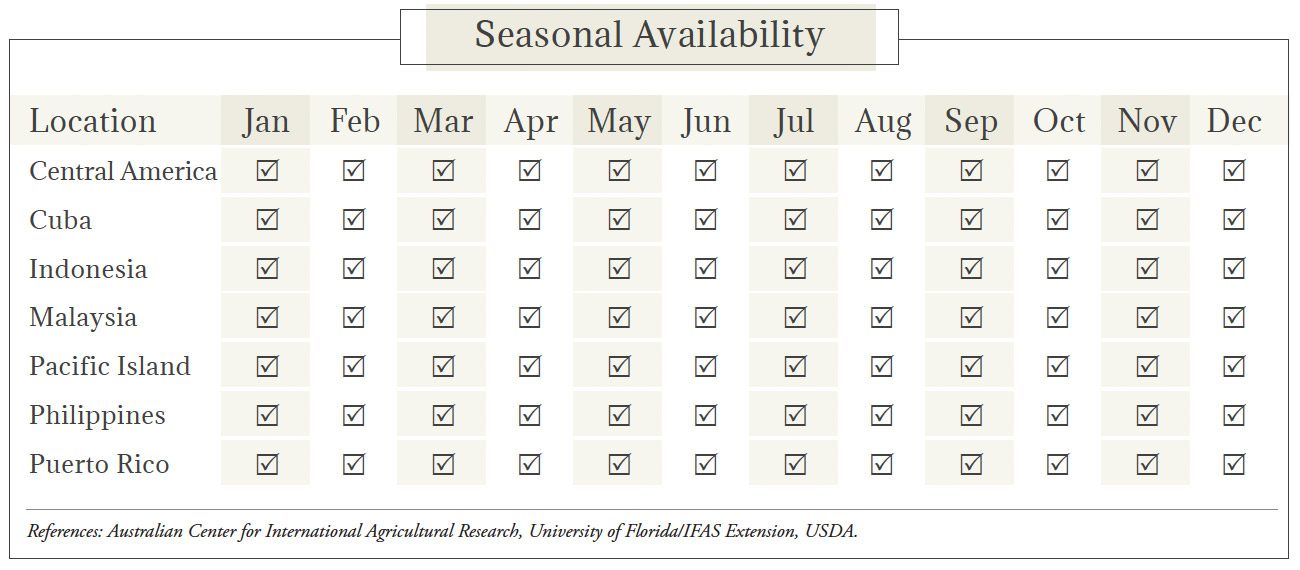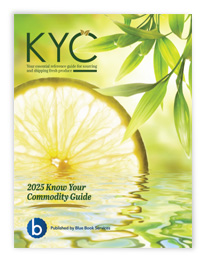Coconut Market Summary

Image: Rahul D Silva/Shutterstock.com
Coconut Industry Overview
Coconuts (Cocos nucifera) are the seeds of the coconut palm tree. It is difficult to pin down the actual birthplace of the tree (South Pacific or Malay Archipelago), as coconut seeds are extremely hardy and can float for long distances to germinate once they wash ashore. In the wild, ripe coconuts fall from trees and grow where they land.
Types & Varieties of Coconuts
Coconut palm trees are planted commercially in tropical lowlands. The most commonly grown ‘nut’ is actually a drupe with oval seeds, a fibrous husk (green or yellow initially then brown at maturity), and the hard shell. The shell houses the copra or the white, fleshy meat and coconut water (coconut milk is produced by crushing the meat). The more mature the coconut, the more meat and water absorption, leaving less liquid.Trees are classified as dwarf or tall; average height is 50 to 60 feet for tall and 25 feet for dwarf trees. Coconut palms, which contain the seed or nut surrounded by the husk, can grow up to 18 inches in length and 12 inches in diameter. The nut itself can reach 6 to 8 inches in diameter with three sunken soft tissue spots called “eyes” at one end.
Cultivation of Coconuts
Coconut palms can tolerate a wide range of soil types provided they are well drained. Trees are resistant to salt spray and do well along shorelines, but can be grown inland. A minimum average air temperature of 72°F, annual rainfall of at least 30 inches, and full sunlight are required for successful cultivation. Coconut palms can tolerate hurricane-force winds and short periods of flooding or drought, but injury and possible death will result from cold snaps and temperatures below freezing.Planting is generally during rainy summer months in beds several feet high and wide to prevent waterlogging of roots. When transplanting, irrigation of at least 1 inch per week is particularly important in the first year. Mulching is recommended to retain moisture and discourage weeds.
Coconuts to be used for seed are ready to plant if they produce a sloshing sound when shaken. Germination is most successful in hot weather of 90 to 100°F. Tree trunks become established in about 5 years and begin to produce male and female ?ower clusters. Healthy trees produce fruit in 5 to 10 years with full production reached between 12 and 20 years old. Tall tree varieties will fruit until the plant is around 80 years old, producing from 50 to 200 fruits throughout the year depending on variety.
Coconuts are harvested throughout the year and picked at different maturities depending upon use: a year maturity for copra or dehydrated coconut, 7 months for coconut milk.
Pests & Diseases Affecting Coconuts
Pests of concern include coconut mealybugs, rhinoceros beetles, American palm cixiids, red palm weevils and mites, spider mites, palm aphids, and caterpillars. Immature, trimmed coconuts can be treated with preservatives to prevent browning, extending storage by several days. Wet conditions will cause mold, particularly in immature, trimmed coconuts.Coconut palms are susceptible to lethal yellowing disease, bud rot caused by phytophthora, trunk rot, stem bleeding, and chalara paradoxa fungus. Most can be prevented through well-drained soil and avoidance of damage to tree trunks, particularly during transplantation. Lethal yellowing can be treated with antibiotic injections either on a preventative basis, when the disease is found, or as a repeated treatment after infection
Storage & Packaging of Coconuts
Nuts to be sold without their outer casing are husked in the ?eld. Mature, husked coconuts are sold in large plastic or burlap bags or small plastic mesh bags. They are also sold in cartons of varying size. Copra is sold fresh-cut in overwrapped trays or plastic bags, and can be sun or kiln dried, roasted, or smoked. Processors sometimes cut a circular hole into a husked coconut and attach a pull-tab for easy access.Immature coconuts are trimmed to remove most of the husk and shipped with a ?at bottom and exposed eyes. Husking, while economical and convenient for marketing, shortens postharvest life to three weeks or less. Mature coconuts should be cooled after harvest, preventing temperature fluctuations to prevent cracking. Film-wrapping or waxing can help prevent dehydration and the resulting loss of quality in both mature and immature coconuts. Storage over six weeks will sour the coconut milk.
References: State of Hawaii (Hawaii.gov), Purdue University, University of Florida/IFAS Extension, University of Hawaii.
Grades & Good Arrival of Coconuts
There is no formal grading process for coconuts. Informal grades, based on size and weight, exist but may differ between countries.Caribbean Coconut Shipments: 65-70 lb. Sacks



